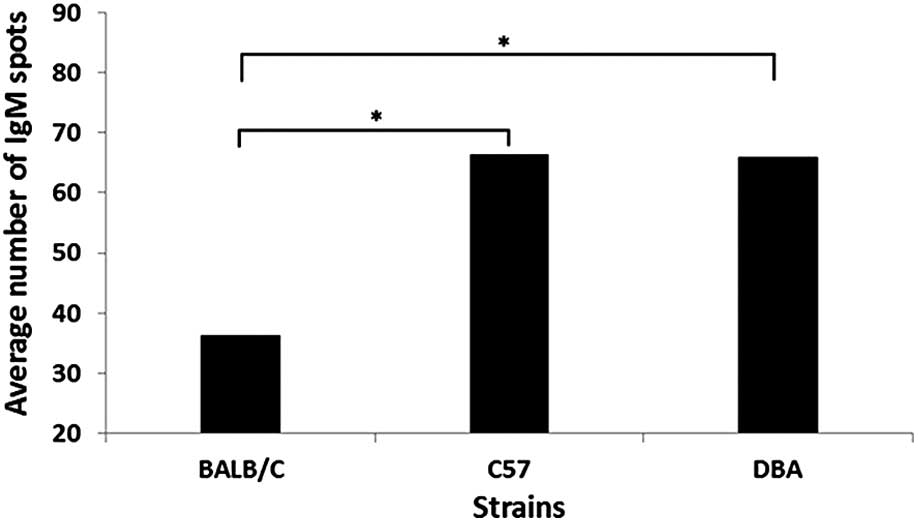Recognition of tumor antigens in 4T1 cells by natural IgM from three strains of mice with different susceptibilities to spontaneous breast cancer
- Authors:
- Published online on: November 23, 2016 https://doi.org/10.3892/ol.2016.5427
- Pages: 271-274
Metrics: Total
Views: 0 (Spandidos Publications: | PMC Statistics: )
Total PDF Downloads: 0 (Spandidos Publications: | PMC Statistics: )
Abstract
The issue of antibody responses to tumors is potentially important to cancer immunologists. Early detection of cancer represents one of the most promising approaches to reduce the growing cancer burden. Natural immunoglobulin (Ig)M antibodies have been associated with the recognition and elimination of cancerous and precancerous cells. Using natural IgM antibodies, the present study identified a set of antigens in healthy mice from three different strains and examined whether the global patterns of antibodies are able to discriminate between a condition of more or less susceptibility to breast cancer. The current study performed two‑dimensional (2D) immunoblotting to detect antigens from 4T1 cells using natural IgM from serum of healthy female mice from three different strains. The t‑test was used to analyze the total number of spots. There were no significant differences in the numbers of antigens recognized in each strain. However, differences in patterns were observed on 2D immunoblots among the three strains. The reactivity patterns of natural IgM antibodies to particular antigens exhibited non‑random clustering, which discriminated between strains with different susceptibilities to spontaneous breast cancer. The results demonstrated that the patterns of reactivity to defined subsets of antigens are able to provide information regarding differential diagnosis associated with breast cancer sensitivity. Therefore, it may be concluded that it is possible to segregate the IgM humoral immune response toward cancer antigens according to the genetic background of individuals. In addition, it is possible to identify the recognized antigens that allow grouping or discriminate between the different IgM antibodies expressed. The possible association between a particular antigen and cancer susceptibility requires further study, but the methodology exposed in the present study may identify potential candidates for this possible association.













